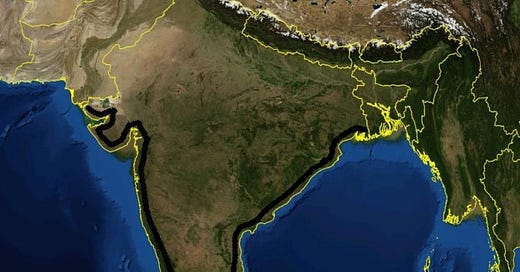January 13, 2011.
That is the date one year ago today, when a 2-year-old girl in the West Bengal state fell ill of the crippling disease polio. That was the last case of polio in India.
Moreover, calling this a major milestone is putting it mildly. This is an unprecedented achievement for India, which not long ago was considered the epicenter for polio.
The World Health Organization (WHO) Director-General Margaret Chan said of this achievement, “India’s success is arguably its greatest public health achievement and has provided a global opportunity to push for the end of polio.”
Bill Gates of Bill and Melinda Gates Foundation noted, “This is a major milestone in the global fight against polio. Children in India are now protected against this debilitating, but preventable disease, bringing us one step closer to saving and improving the lives of all children.”
There is a good possibility that India will be taken off the polio endemic list depending on laboratory analysis of sewage samples expected to be released in mid-February.
To be declared polio-free by the WHO, India will have to prevent polio from resurfacing for two more years.
According to UNICEF, in 1985, India had 150,000 cases of polio. This had fallen to about 6,000 in 1991, to 741 in 2009 and to just 42 in 2010. In fact, in 2009, India had half of the reported cases of polio worldwide.
There is a lot of kudos to go around on this cautious, but well deserved celebration. The Indian government, Rotary International, WHO and the Gates Foundation contributed heavily in both funding and resources to polio eradication in the country.
In fact, in 2011 alone, the mobilization of millions across the country and the billions of dollars invested for a mass eradication program set out to give every child under five the oral polio vaccine.
As Reuters reports:
Around 900,000 doses of oral polio vaccine were given, immunizing 172 million children and involving 2.3 million vaccinators who visited 200 million homes in 2011 alone.
India has also used mobile vaccination teams that immunize children at bus stops, train stations, inside moving trains and in marketplaces.
In addition, the WHO’s National Polio Surveillance Project instituted the use of the bivalent polio vaccines–targeting both type 1 and type 3 polio viruses, where earlier vaccination attempts targeted only one of the viruses and then the other would surface and spread.
However, as the Indian Ministry of Health and Family Welfare said in a press release, there is no room for complacency.
The threat from imported polio from neighboring endemic nations of Pakistan and Afghanistan will remain an issue for India and the intense vaccination programs cannot slow down.
Polio is caused by the poliovirus types 1, 2 and 3. All three types cause paralysis, with wild poliovirus type 1 being isolated from paralysis cases most often.
This viral infection is primarily spread from person to person through the fecal-oral route. However, in places where sanitation is very good, transmission though throat secretions may be considered more important.
Polio is recognized in about 1 percent of infections by flaccid paralysis, while over 90 percent of infections are unapparent.
Paralysis of poliomyelitis is usually asymmetric and the site of paralysis depends on the location of nerve cell destruction on the spinal cord or brain stem. Legs are affected more often than the arms.
Paralysis of the respiration can be life threatening.
Polio must be differentiated from other paralytic diseases like botulism and Guillain-Barre Syndrome.
The countries that have not succeeded in interrupting polio transmission and are considered endemic include Afghanistan, Nigeria and Pakistan.
Most cases of polio are in children under the age of three.
Prevention of polio is through immunization, either through the live oral poliovirus vaccine (OPV) or the inactivated poliovirus vaccine (IPV).
With just over 1300 cases of polio reported worldwide in 2010, the possibility that polio could be the second infectious disease eradicated off the face of the earth seems more plausible every day.





